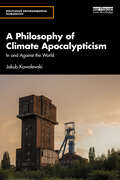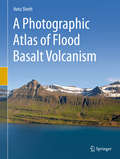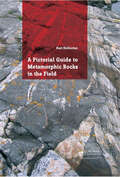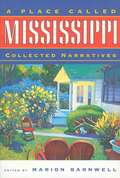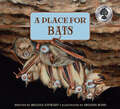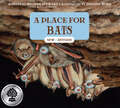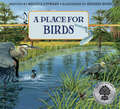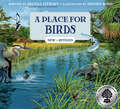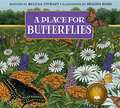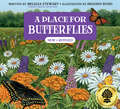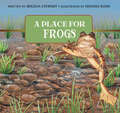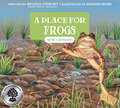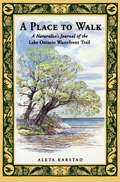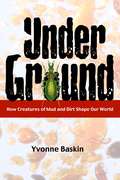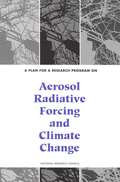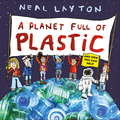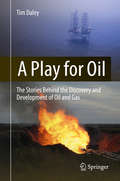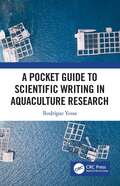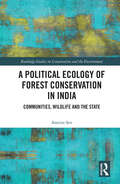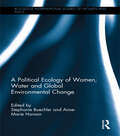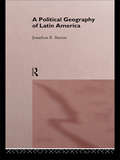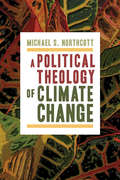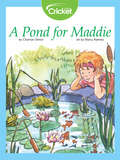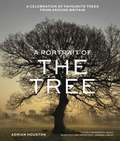- Table View
- List View
A Philosophy of Climate Apocalypticism: In and Against the World (Routledge Environmental Humanities)
by Jakub KowalewskiThis book offers a long-overdue analysis of the ubiquity of eco-apocalypticism in current discourses on the climate crisis.Drawing on a wide range of sources and theoretical traditions from ecological works and radical pamphlets, through political theology and continental philosophy to ancient and medieval apocalypses, the book sheds a comprehensive light on the concepts, processes, and experiences which circulate around the figure of the environmental end of the world. Importantly, this book argues that apocalypticism can provide a productive philosophical framework for addressing the climate catastrophe, enabling us to propose a distinctive answer to the fundamental question which haunts progressive ecological projects: how can we defend the world we find indefensible?Appealing to students, academics, and researchers in philosophy, political theology, and environmental humanities, this book is a timely intervention which hopes to demonstrate that, when all else fails, it is the end of the world which may save the planet.
A Photographic Atlas of Flood Basalt Volcanism
by Hetu ShethThis unique book presents hundreds of spectacular photographs of large-scale to small-scale field geological features of flood basalt volcanism from around the world. Major flood basalt provinces covered in this book include the British Palaeogene, Central Atlantic Magmatic Province, Columbia River, Deccan, East Greenland, Emeishan, Ethiopian, Ferrar-Karoo-Tasmania, Iceland, Indo-Madagascar, Paran#65533;, Siberian, West Greenland, and others. Intermediate- to small-sized flood basalts (such as Saudi Arabia and South Caucasus) are also included. Different chapters of the book illustrate varied features of flood basalts, including landscapes, lava flow morphology and stacking, structures formed during lava flow transport, inflation and degassing, structures produced during lava solidification, subaqueous volcanism and volcanosedimentary associations, explosive volcanism, intrusions, igneous processes and magmatic diversity, tectonic deformation, secondary mineralization, and weathering and erosion. This book will be valuable for a large audience: specialists studying flood basalt volcanology, petrology, geochemistry, geochronology, geophysics, and environmental impact and mass extinction links; nonspecialists who want to know more about flood basalts; field geologists (such as those working in geological surveys); students of volcanology and igneous petrology, and even people employed in the industry, such as those working on flood basalt-hosted groundwater or petroleum reservoirs.
A Pictorial Guide to Metamorphic Rocks in the Field
by Kurt HollocherThis book is an illustrative introduction to metamorphic rocks as seen in the field, designed for advanced high school to graduate-level earth science and geology students to jump-start their observational skills. In addition to photographs of rocks in the field, there are numerous line diagrams and examples of metamorphic features shown in thin section. The thin section photos are all at a scale and in a context that can be related to views seen in the field through a hand lens. This book will serve as a pictorial atlas of metamorphic rocks, processes, and features. Suitable for a broad range of education, background, and interests.
A Place Called Mississippi
by David G. SansingFilled with serendipitous connections and contrasts, this volume of Mississippiana covers four hundred years. It begins with a selection from “A Gentleman from Elvas,” written in 1541, and ends with an essay the novelist Ellen Douglas wrote in 1996 on the occasion of the Atlanta Olympic games. In between is a chronology of some one hundred nonfictional narratives that portray the distinctiveness of life in Mississippi. Most are reprinted, but some are published here for the first time. Each section of this anthology reveals an aspect of Mississippi’s past or present. Here are narratives that depict the settlement of the land by pioneers, the lasting heritage of the Civil War, the pleasures and the pastimes of Mississippians, their food, art, rituals, and religion, the terrain and the travelers, and the conflicts that brought enormous changes to both the landscape and the population. In its wide cultural perspective, A Place Called Mississippi includes an early description of the Chickasaws, a narrative of a former slave, “Soggy” Sweat’s famous “Whiskey Speech” on Prohibition, and an account of how W. C. Handy discovered the blues in a deserted train station in Tutwiler, Mississippi. Among the selections are narratives by Jefferson Davis, Belle Kearney, Walter Anderson, Ida B. Wells, Richard Wright, Craig Claiborne, Richard Ford, William Faulkner, and Eudora Welty. Written by and about blacks, whites, Native Americans, and others, these fascinating accounts convey a variety of impressions about a real place and about real people whose colorful history is large, ever-changing, and ever-mystifying.Filled with serendipitous connections and contrasts, this volume of Mississippiana covers four hundred years. It begins with a selection from “A Gentleman from Elvas,” written in 1541, and ends with an essay the novelist Ellen Douglas wrote in 1996 on the occasion of the Atlanta Olympic games. In between is a chronology of some one hundred nonfictional narratives that portray the distinctiveness of life in Mississippi. Most are reprinted, but some are published here for the first time. Each section of this anthology reveals an aspect of Mississippi’s past or present. Here are narratives that depict the settlement of the land by pioneers, the lasting heritage of the Civil War, the pleasures and the pastimes of Mississippians, their food, art, rituals, and religion, the terrain and the travelers, and the conflicts that brought enormous changes to both the landscape and the population. In its wide cultural perspective, A Place Called Mississippi includes an early description of the Chickasaws, a narrative of a former slave, “Soggy” Sweat’s famous “Whiskey Speech” on Prohibition, and an account of how W. C. Handy discovered the blues in a deserted train station in Tutwiler, Mississippi. Among the selections are narratives by Jefferson Davis, Belle Kearney, Walter Anderson, Ida B. Wells, Richard Wright, Craig Claiborne, Richard Ford, William Faulkner, and Eudora Welty. Written by and about blacks, whites, Native Americans, and others, these fascinating accounts convey a variety of impressions about a real place and about real people whose colorful history is large, ever-changing, and ever-mystifying.
A Place for Bats (A Place For. . . #5)
by Melissa StewartDid you know that almost a third of the world's 1,300 species of bats are in serious trouble?Chased from their caves and forests, sickened by cave-dwelling fungi, and swept from the skies by wind turbines, bats have no place to hide. And human actions often contribute to the problems. How can we help ensure that there will be a safe place for bats?In simple yet compelling language, acclaimed science writer Melissa Stewart showcases twelve types of North American bats, from the familiar little brown bat to the Mexican free-tailed bat. Her clear narrative shows the threats these bats face, and informative sidebars describe a variety of efforts to save them.In addition, remarkable full-color illustrations vividly and accurately depict bats within the ecosystems that support their survival. Range maps and additional bat facts are also included.This nonfiction picture book is part of a prize-winning series designed to inform young readers about a wide range of environmental issues and to present ways people can help protect animals and their natural habitats. A classroom favorite, this book is perfect for budding scientists, environmentalists, and nature lovers.
A Place for Bats (A Place For. . . #5)
by Melissa StewartDid you know that almost a third of the world&’s 1,300 species of bats are in serious trouble?The latest, updated edition of a teacher and classroom favorite with two brand new illustrations and spotlights on vanishing species and how we can help. Perfect for budding scientists, environmentalists, and nature lovers.Chased from their caves and forests, sickened by cave-dwelling fungi, and swept from the skies by wind turbines, bats have no place to hide. And human actions often contribute to the problems. How can we help ensure that there will be a safe place for bats?In simple yet compelling language, acclaimed science writer Melissa Stewart showcases twelve types of North American bats, from the familiar little brown bat to the Mexican free-tailed bat. Her clear narrative shows the threats these bats face, and updated informative sidebars describe a variety of efforts to save them. In addition, remarkable full-color illustrations vividly and accurately depict bats within the ecosystems that support their survival. Range maps and additional bat facts are also included.This newly updated nonfiction picture book is part of a prize-winning series designed to inform young readers about a wide range of environmental issues and to present ways people can help protect animals and their natural habitats.
A Place for Birds (A Place For. . . #2)
by Melissa StewartNorth America has almost three billion fewer birds now than it had fifty years ago. It may be hard to believe, but birds are in danger, and they are calling for our help. Sadly, humans are often the source of the harm! What can we do to help save them?In simple yet compelling language, Melissa Stewart showcases twelve North American birds, from the familiar eastern bluebird to the rare Kirtland's warbler. Her clear narrative shows the threats these birds face, and informative sidebars describe a wide variety of efforts to save them. In addition, remarkable full-color illustrations vividly and accurately depict the birds within the ecosystems that support their survival. Range maps and additional bird facts are also included.This nonfiction picture book is part of the prize-winning A Place for... series designed to inform young readers about a wide range of environmental issues and to present ways people can help protect animals and their natural habitats. An ideal choice for young birders, scientists, environmentalists, and nature lovers.
A Place for Birds (A Place For. . . #2)
by Melissa StewartThe latest updated edition of this fact-filled, colorful look at the amazing world of birds includes two brand new illustrations and a call to action to protect these beautiful creatures.In simple yet informative language, A Place for Birds introduces young readers to the ways human action or inaction can affect bird populations and opens kids&’ minds to a wide range of environmental issues. Describing various examples, the text provides an intriguing look at birds, at the ecosystems that support their survival, and at the efforts of some people to save them. At the end of the book, the author offers readers a list of things they can do to help protect these special creatures in their own communities.
A Place for Butterflies (A Place For. . . #1)
by Melissa StewartOnce abundant monarch butterflies are disappearing in the United States, but that's only part of the story. Many other butterfly species are also in trouble, and human action is often the cause of their plight. What can we do to help protect this important insect?In clear and compelling language, Melissa Stewart showcases twelve North American butterflies—from the familiar eastern tiger swallowtail to the rare Palos Verdes blue butterfly—and the ecosystems that support their survival. The simple narrative states the dangers that each of these butterfly populations face, and informative sidebars describe the efforts of people to save them. Featuring glorious full-color illustrations by Higgins Bond and range maps for each butterfly, this book is perfect for aspiring entomologists and conservationists. This nonfiction picture book is one of the six titles in the prize-winning A Place for... series, a collection that opens readers' minds to a wide range of environmental issues and shows how humans are striving to protect animals and their natural habitats.
A Place for Butterflies (A Place For. . . #1)
by Melissa StewartThe latest updated edition of this fact-filled, colorful look at the amazing world of butterflies, which includes two brand new illustrations and a call to action to protect these creatures and their habitats.In simple yet informative language, A Place for Butterflies introduces young readers to the basic facts about butterflies, including how they transform from caterpillars to butterflies, where they live, what they eat, and how they benefit plants and animals. Sidebars throughout the book contain information about how human action has harmed butterflies in the past, and the many ways people can protect certain butterfly populations, like by preserving forests and meadows and cutting down on pesticide use. Also included are pointers on how readers can help butterflies in their own neighborhood.
A Place for Frogs (A Place For. . . #3)
by Melissa StewartThe population of frogs in the United States has been declining for the past fifty years, even in our protected national parks. What dangers do frogs face? How can we help?In simple yet engaging language, acclaimed science writer Melissa Stewart showcases twelve types of North American frogs, from the wood frog to the now rare Oregon spotted frog. Her clear narrative shows the threats these frogs face, and informative sidebars describe a wide variety of efforts to save them. In addition, remarkable full-color illustrations vividly and accurately depict the frogs within the ecosystems that support their survival. This nonfiction picture book is part of a prize-winning series designed to inform young readers about a wide range of environmental issues and to present ways people can help protect animals and their natural habitats.
A Place for Frogs (A Place For. . . #3)
by Melissa StewartThe latest updated edition of this fact-filled, colorful look at the amazing world of frogs includes two brand new illustrations and a call to action to protect these beautiful creatures.In simple yet engaging language, acclaimed science writer Melissa Stewart showcases twelve types of North American frogs, from the wood frog to the now rare Oregon spotted frog. Her clear narrative shows the threats these frogs face, and updated, informative sidebars describe a wide variety of efforts to save them. In addition, remarkable full-color illustrations vividly and accurately depict the frogs within the ecosystems that support their survival.This nonfiction picture book is part of a prize-winning series designed to inform young readers about a wide range of environmental issues and to present ways people can help protect animals and their natural habitats.
A Place to Walk: A Naturalist's Journal of the Lake Ontario Waterfront Trail
by Aleta KarstadWhat do experienced field naturalists discover when they explore the heavily populated Lake Ontario shoreline as if they were surveying a wilderness for the first time? In this beautifully illustrated book, Aleta Karstad takes you on a journey of discovery along the route of the Lake Ontario Waterfront Trail. Listening for calling frogs in spring, turning stones, sampling shoreline drift, identifying plants and animals, Karstad and her husband, herpetologist Frederick W. Schueler, discover a wealth of natural life, sometimes in unexpected places. The expedition journal, illustrated by Aleta Karstad’s elegant drawings and delicate watercolours, takes up where popular field guides leave off. It is a guide and inspiration for readers to explore their own region with fresh eyes, with an invitation to assist in monitoring animal communities.
A Plague of Rats and Rubbervines: The Growing Threat Of Species Invasions
by Yvonne BaskinThe human love of novelty and desire to make one place look like another, coupled with massive increases in global trade and transport, are creating a growing economic and ecological threat. The same forces that are rapidly "McDonaldizing" the world's diverse cultures are also driving us toward an era of monotonous, weedy, and uniformly impoverished landscapes. Unique plant and animal communities are slowly succumbing to the world's "rats and rubbervines"--animals like zebra mussels and feral pigs, and plants like kudzu and water hyacinth--that, once moved into new territory, can disrupt human enterprise and well-being as well as native habitats and biodiversity. From songbird-eating snakes in Guam to cheatgrass in the Great Plains, "invasives" are wreaking havoc around the world. In A Plague of Rats and Rubbervines, Yvonne Baskin draws on extensive research to provide an engaging and authoritative overview of this problem. She takes the reader on a worldwide tour of grasslands, gardens, waterways, and forests, describing the troubles caused by exotic organisms that run amok in new settings and examining how commerce and travel on an increasingly connected planet are exacerbating this oldest of human-created problems. She offers potential solutions and profiles individuals worldwide who are working tirelessly to protect the places and creatures they love. While our attention is quick to focus on purposeful attempts to disrupt our lives and economies by releasing harmful biological agents, we often ignore equally serious but much more insidious threats, those that we inadvertently cause by our own seemingly harmless actions. A Plague of Rats and Rubbervines takes a compelling look at this underappreciated problem and sets forth positive suggestions for what we as consumers, gardeners, travelers, nurserymen, fishermen, pet owners, businesspeople--indeed all of us who by our local choices drive global commerce--can do to help."
A Plague of Sheep
by Elinor G. K. MelvilleThis is a book about the biological conquest of the New World. Taking as a case study the sixteenth-century history of a region of highland central Mexico, it shows how the environmental and social changes brought about by the introduction of Old World species aided European expansion. The book spells out in detail the environmental changes associated with the introduction of Old World grazing animals into New World ecosystems, demonstrates how these changes enabled the Spanish takeover of land, and explains how environmental changes shaped the colonial societies.
A Plan for a Research Program on Aerosol Radiative Forcing and Climate Change
by National Research Council StaffThis book recommends the initiation of an "integrated" research program to study the role of aerosols in the predicted global climate change. Current understanding suggest that, even now, aerosols, primarily from anthropogenic sources, may be reducing the rate of warming caused by greenhouse gas emissions. In addition to specific research recommendations, this book forcefully argues for two kinds of research program integration: integration of the individual laboratory, field, and theoretical research activities and an integrated management structure that involves all of the concerned federal agencies.
A Planet Full of Plastic: and how you can help
by Neal LaytonEverything is made of stuff. Some things are made of paper, like this book. And some things are made of PLASTIC. If you look around you, plastic is everywhere. Even in places where it's not meant to be. If it drops to the ground, it doesn't rot away - it sticks around for ever.Our world is drowning in plastic, and it's a big problem. Award-winning author-illustrator Neal Layton is here to explain where plastic comes from, why it doesn't biodegrade, and why that's dangerous for animals and humans alike. But he's also FULL of ideas for how you can help! From giving up straws in juice cartons to recycling all we can and taking part in a beach clean, A Planet Full of Plastic will get young readers excited about how they can make a difference to keep Planet Earth happy.This brilliant non-fiction picture book, illustrated in Neal's trademark collage style, is perfect for readers aged 5-7 who love nature and want to help the environment.
A Play for Oil: The Stories Behind the Discovery and Development of Oil and Gas
by Tim DaleyYou hold in your hands the most original guide to understanding the oil and gas world - from exploration and production to the related economics and geopolitics. Tim Daley has spent years travelling the world and living as an expatriate in a quest to secure resources and meet humanity's energy demands. After several decades in the hydrocarbon business, he was keen to write a book about his experiences in an easily accessible language, enabling everyone to grasp the technicalities involved in evaluating the resources that lie beneath our feet. If you want to learn how hydrocarbons are discovered and produced, Tim's explanations have the added colour of vivid descriptions of the sites discussed and allow you to meet some of the most important characters in the industry, and to gain new insights into this global industry. In addition, the depictions of key events and locations add an element of national politics and travelogue feel. This book is intended for all members of the general public interested in how hydrocarbon resources are discovered, providing a concise account of how oil geologists view the subsurface, and illustrated by the author's personal experiences in countries around the world. The book will also be of interest to ex-oil industry workers, allow geologists to compare the author's experiences to their own, and provide non-geologists essential insights into how the oil is won. Written in an informal style, it makes for a relaxing yet informative reading experience.
A Pocket Guide to Scientific Writing in Aquaculture Research
by Rodrigue YossaWriting for a high-quality scientific aquaculture publication is challenging, and many students and early career aquaculture scientists find the task daunting. Expanding on his popular workshop on Improving Scientific Writing at the 2017 World Aquaculture conference, Rodrigue Yossa provides new researchers with all the tools they need to write abstracts and a variety of articles (original, research reports, magazines, working papers, conference proceedings and more). He also takes the reader step-by-step through the process of reviewing submitted manuscripts and replying to reviewers, as well as understanding research ethics. Each section is accompanied by examples, and attention is focused on providing advice on grammar, how to focus your paper and possible loopholes when writing. A Pocket Guide to Scientific Writing in Aquaculture Research offers a lifeline to aquaculture students and early career researchers getting a grasp on the basics of science communication through writing.
A Political Ecology of Forest Conservation in India: Communities, Wildlife and the State (Routledge Studies in Conservation and the Environment)
by Amrita SenThis book critically explores the political ecology of human marginalization, wildlife conservation and the role of the state in politicizing conservation frameworks, drawing on examples from forests in India. The book specifically demonstrates the nuances within human-environmental linkages, by showing how environmental concerns are not only ecological in content but also political. In India a large part of the forests and their surrounding areas were inhabited far before they were designated as protected areas and inviolate zones, with the local population reliant on forests for their survival and livelihoods. Thus, socioecological conflicts between the forest dependents and official state bodies have been widespread. This book uses a political ecology lens to explore the complex interplay between current norms of forest conservation and environmental subjectivities, illustrating contemporary articulation of forest rights and the complex mediations between forest dependents and different state and non-state bodies in designing and implementing regulatory standards for wildlife and forest protection. It foregrounds the issues of identity, migration and cultural politics while discussing the politics of conservation. Through a political ecology approach, the book not only is human-centric but also makes significant use of the role of non-humans in foregrounding the conservation discourse, with a particular focus on tigers. The book will be of great interest to students and academics studying forest conservation, human–wildlife interactions and political ecology.
A Political Ecology of Women, Water and Global Environmental Change (Routledge International Studies of Women and Place)
by Stephanie Buechler Anne-Marie S. HansonThis edited volume explores how a feminist political ecology framework can bring fresh insights to the study of rural and urban livelihoods dependent on vulnerable rivers, lakes, watersheds, wetlands and coastal environments. Bringing together political ecologists and feminist scholars from multiple disciplines, the book develops solution-oriented advances to theory, policy and planning to tackle the complexity of these global environmental changes. Using applied research on the contemporary management of groundwater, springs, rivers, lakes, watersheds and coastal wetlands in Central and South Asia, Northern, Central and Southern Africa, and South and North America, the authors draw on a variety of methodological perspectives and new theoretical approaches to demonstrate the importance of considering multiple layers of social difference as produced by and central to the effective governance and local management of water resources. This unique collection employs a unifying feminist political ecology framework that emphasizes the ways that gender interacts with other social and geographical locations of water resource users. In doing so, the book further questions the normative gender discourses that underlie policies and practices surrounding rural and urban water management and climate change, water pollution, large-scale development and dams, water for crop and livestock production and processing, resource knowledge and expertise, and critical livelihood studies. This book will be of interest to students and scholars of environmental studies, development studies, feminist and environmental geography, anthropology, sociology, environmental philosophy, public policy, planning, media studies, Latin American and other area studies, as well as women’s and gender studies.
A Political Geography of Latin America
by Jonathan R. BartonThe nation-states and peoples of South and Central America, Cuba, Haiti and the Dominican Republic, that together form the political geographical region of Latin America, encompass a wide range of societies, politics and economies. This text exposes the differences between places, regions and countries, individuals and societies, offering an invaluable insight into the themes of political and economic development, and provides a guide to understanding power and space relations. From the Antarctic to the tropical jungles, the coastal communities to the highland villages, the mega-cities to isolated rural existence, the political geographies of lives, localities, cities and rurality are too sophisticated to be subjected to generalizations. Adopting a critical human geography perspective, Jonathon Barton provides an understanding of similarities, difference and sophisticated human geographies.
A Political Theology of Climate Change
by Michael S. NorthcottMuch current commentary on climate change, both secular and theological, focuses on the duties of individual citizens to reduce their consumption of fossil fuels. In A Political Theology of Climate Change, however, Michael Northcott discusses nations as key agents in the climate crisis.Against the anti-national trend of contemporary political theology, Northcott renarrates the origins of the nations in the divine ordering of history. In dialogue with Giambattista Vico, Carl Schmitt, Alasdair MacIntyre, and other writers, he argues that nations have legal and moral responsibilities to rule over limited terrains and to guard a just and fair distribution of the fruits of the earth within the ecological limits of those terrains.As part of his study, Northcott brilliantly reveals how the prevalent nature-culture divide in Western culture, including its notion of nature as "private property," has contributed to the global ecological crisis. While addressing real difficulties and global controversies surrounding climate change, Northcott presents substantial and persuasive fare in his Political Theology of Climate Change.
A Pond for Maddie
by Charnan SimonWhat is the difference between and man-made pond and a natural pond? Maddie learns all about ponds while she and her family bring an artificial pond back to life.
A Portrait of the Tree: A celebration of favourite trees from around Britain
by Adrian HoustonA stunning collection of portraits of favourite trees from around Britain by photographer Adrian Houston.---'This is a wonderful book: beautiful and important' - Joanna Lumley'A must-read for all conservationists, environmentalists and nature lovers' - Sir Richard Branson'Adrian's stunning photographs capture the majesty of these iconic trees.' - Geraint Richards, Chair of Action Oak---A Portrait of the Tree is a repository of memories, and a testament to the British landscape. Trees are revealed as religious signifiers, historical landmarks, national emblems.Sparked by a simple question: 'What is your favourite tree?', photographer Adrian Houston discovered a wealth of fascinating stories enmeshed with these giants of the natural world - some of miraculous survival, others of sheltering royalty, or witnessing history, or simply of personal grief and renewal. Adrian photographed each nominated tree looking utterly glorious: spotlit by night, bathed in morning sunshine, wreathed in delicate mist or blazing with autumn colour. From the cedars of Highclere Castle to the plane trees of London, ancient pine woods of the Scottish Highlands to veteran oaks that have stood witness to time; from native stalwarts such as the monumental beech to endangered giant redwoods. This stunning celebration bears witness to the might and majesty of the lungs of the earth - the tree. Includes: Joanna Lumley, Tony Kirkham, Dr George McGavin, Antony Gormley, Jasper Conran, Alice Temperley, Alan Titchmarsh, Sir Richard Carew Pole, the Reverend Lucy Winkett
